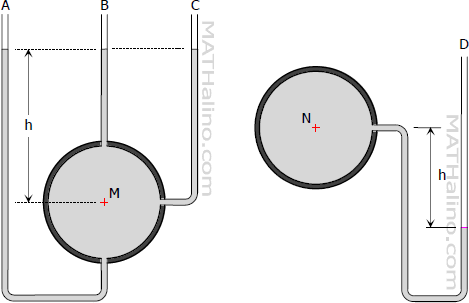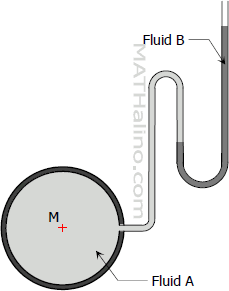Manometers
Manometer is a simple and inexpensive device of measuring pressure and pressure difference. It is usually bent to form a U-tube and filled with liquid of known specific gravity. The surface of the liquid will move in proportion to changes of pressure.
Types of Manometer
Piezometer
Piezometer is the simplest form of manometer which is tapped into the wall of pressure conduit for the purpose of measuring pressure. Though effective in many purposes, piezometer is not practical to use in lighter liquids with large pressure and cannot be used to measure gas pressure.

From the figure above, three piezometers A, B, and C are attached to a pressure conduit at bottom, top, and side, respectively. The column of liquid at A, B, and C will rise at the same level above M indicating a positive pressure at M. Also, the piezometer D measures the negative pressure at N.
Open Manometer
Open manometer is a tube bent into a U-shape to contain one or more fluids of different specific gravities. It is used to measure pressure. Example of open manometer is shown below.

Differential Manometer
Differential manometer cannot measure pressure but can measure pressure difference. Frequently in hydraulic problems, difference in pressure is more useful information than the pressure itself.

Back to top
Steps in Solving Manometer Problems
Ordinarily, it is easier to work in units of pressure head rather than pressure for solving any manometer problem.
- Draw a sketch of the manometer approximately to scale.
- Decide on the fluid of which head are to be expressed. Water is more desirable. In most cases, we suggest to use head in water even if there is no water in the system.
- Starting at a point of know pressure head, number in order the levels of contact of fluids of different specific gravities.
- Proceed from level to level, add pressure head in going down and subtract pressure head in going up with due regard to the specific gravity of the fluids.
- Log in to post comments
